The year 2018 witnessed the establishment of State Administration for Market Regulation (SAMR). Food safety was resolutely promoted and intensity of food sampling inspection also continued to promote. In 2018, SAMR has conducted nationwide sampling inspection on 3,355,882 batches of food (including health food and food additives), which is an increase of 991,802 batches over the whole of 2017 (2,364,080 batches), with a growth rate of 42%. In terms of the pass rate of sampling inspection, the overall rate in 2018 is 97.58%, which is 0.13 percentage points lower than that in 2017 (97.71%).
1. Analysis of the main factors leading to failure of food in sampling inspection and their causes
Excessive use of food additives, microbial contamination and excessive pesticide and veterinary drug residues are prominent factors leading to the failure of food in sampling inspection in 2018. The failed samples resulted from these three factors together account for nearly 80% of the total samples. Other minor factors such as the failure of quality indicators, heavy metal and other element contamination, non-edible substances detected and biological toxin contamination account for more than 20%.The detailed information are shown in the figures below. Among them, since SAMR did not give the proportion values of each minor factor in the second quarter, the corresponding figure will only show the relevant data of the three major factors.
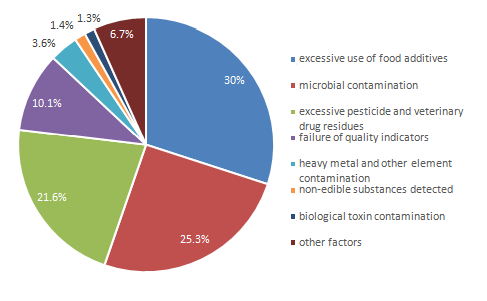
Figure 1.1 Proportion of factors lead to failure of food in sampling inspection in the first quarter of 2018
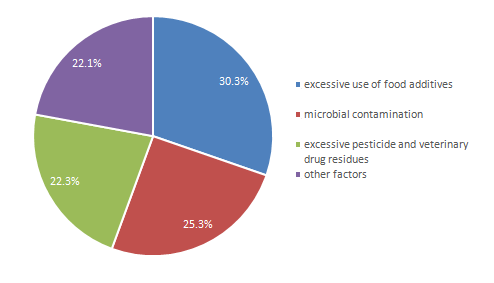
Figure 1.2 Proportion of factors lead to failure of food in sampling inspection in the second quarter of 2018

Figure 1.3 Proportion of factors lead to failure of food in sampling inspection in the third quarter of 2018
It is obvious from the above figures that, the excessive use of food additives, microbial contamination and excessive pesticide and veterinary drug residues are the main factors leading to the failure of food in sampling inspection in 2018, which together account for more than three-quarters. Among them, the improper use of food additives has been dominant, and followed by microbial contamination. In the fourth quarter, however, as shown in the figure below, excessive pesticide and veterinary drug residues has ‘beaten’ microbial contamination, becoming the second largest factor leading to the failure of food in sampling inspection:
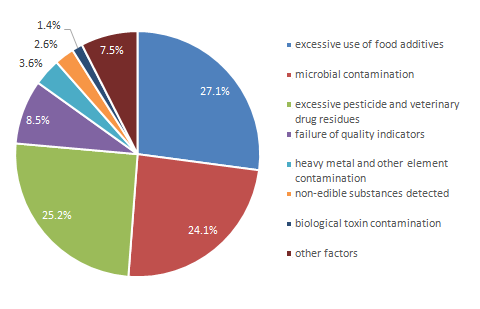
Figure 1.4 Proportion of factors lead to failure of food in sampling inspection in the fourth quarter of 2018
- Analyzed from the purposes of using food additives, factors result in the improper use of them may include: improper use of preservatives and stabilizers in order to excessively extend the shelf life, improper use of flavors and spices in order to increase the taste, improper use of colorants in order to beautify the appearance of the products, as well as inadequate understanding of food safety standards and improper processing techniques, etc.
- In terms of the problem of microbial contamination, it can be summarized that: the control over the sanitary conditions of the circulation link (production-packaging-storage-transportation-sales) is not strict and accurate enough, which enables the growth and reproduction of microorganisms and eventually leads to contamination. Typical problems include poor sanitary conditions in product processing, inadequate disinfection management of equipment and personnel, poor sealing of product packaging, and substandard storage conditions in various circulation links.
- In terms of the excessive pesticide and veterinary drug residues, the causes are relatively simple: abuse of pesticide and veterinary drugs for the purpose of controlling pests and diseases and improving the yield, or long-term abuse of pesticide and veterinary drugs resulted in environmental pollution, which led to the re-residues in the products.
In terms of the minor factors accounting for about a quarter of the total, except for some force majeure, the root causes are nothing more than two things: first, the enterprises have not recognized the problems or the seriousness of the problems; second, they have recognized the problems or the seriousness of the problems but have a fluke mind, or are unable to solve the problems. And the key to ultimately solve the problems, in addition to becoming more competent of the companies themselves, the sense of responsibility is also very important. Moreover, it is without doubt that, as the maker, implementer and supervisor of laws and regulations, the work effectiveness of relevant food regulatory departments is also an extremely important factor for ensuring food safety.
2. Food categories in which the pass rate is lower than the average pass rate
In this section, CIRS group lists the food categories whose pass rate is lower than the average for reference. First, the average pass rate of food sampling in the first quarter of 2018 is 97.4%, which is used as a benchmark, the following figure shows the pass rate of the 8 food categories below this level:
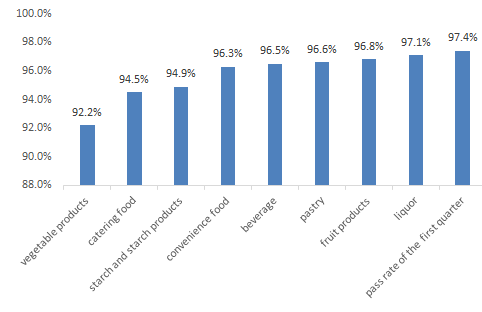
Figure 2.1 Food categories with pass rate lower than the average in the first quarter of 2018
The average pass rate of food sampling in the second quarter of 2018 is 97.5%, which is used as a benchmark, the following figure shows the pass rate of the 9 food categories below this level:
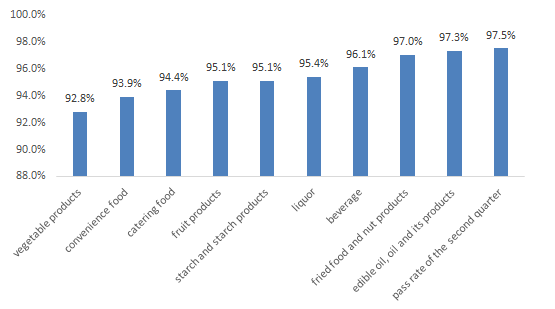
Figure 2.2 Food categories with pass rate lower than the average in the second quarter of 2018
The average pass rate of food sampling in the third quarter of 2018 is 97.6%, which is used as a benchmark, the following figure shows the pass rate of the 10 food categories below this level:
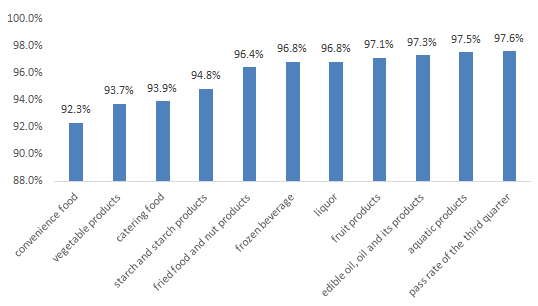
Figure 2.3 Food categories with pass rate lower than the average in the third quarter of 2018
The average pass rate of food sampling in the last quarter of 2018 is 97.6%, which is used as a benchmark, the following figure shows the pass rate of the 10 food categories below this level:
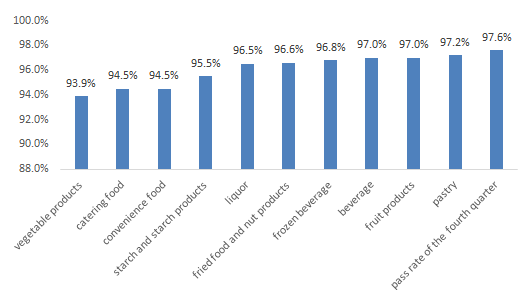
Figure 2.4 Food categories with pass rate lower than the average in the fourth quarter of 2018
It is obvious that vegetable products are the hardest hit area of food safety, and are the food category with the lowest pass rate in the first, second and fourth quarters. Furthermore, the pass rate of convenience food, catering food, liquor, fruit products and starch and starch products in the four quarters of the sampling inspection are significantly lower than the average levels as well.
3. Situation related to special food (infant formula, health food, FSMP)
As a kind of food for certain population, the legal status of special food has been historically defined in Food Safety Law of People’s Republic of China (2015 edition), and the relevant requirements and regulations have been more detailed and more strict. Therefore, CIRS group listed the sampling conditions of such food in 2018 and made a simple summary and analysis. The specific conditions are as follows:
In general, the pass rate of the three categories of special food (infant formula, health food and FSMP) are all higher than the average levels. Among them, the poor supervision and disordered management of health food have led to the chaos of the market, unqualified products, speculation, deception and other adverse phenomena are more prominent than the other two types of food. In 2018, therefore, the pass rate of health food in the sampling inspection is the lowest among the three types of food (the average pass rate in the four quarters is 98.3%). While infant food have undergone more accurate quality control, more attention on the supervision and management, thus, in 2018, the average pass rate of this kind of food is in the first place (99.8%).As a relatively "young" member of the special food camp, FSMP has begun with extremely strict supervision, high entry threshold and much stricter management system, so its pass rate has been rising continuously, 98.7% in the first quarter and 100% in the fourth quarter. Detailed information are shown in the figure below:
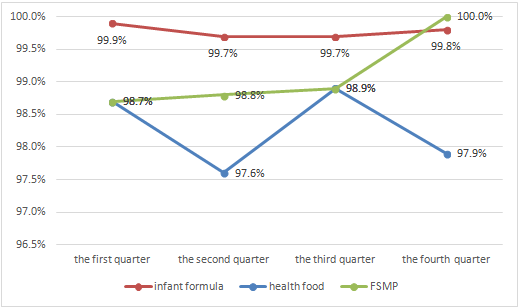
Figure 3.1 Pass rate of special food in 2018 sampling inspection
It is evident that the pass rate of infant formula have remained stable and high, FSMP have remained stable as well, and moved higher at the end of the year. However, although the pass rate of health food in four quarters are all higher than the average pass rate respectively, it shows an unstable situation, which reflects that the market order, product quality and the supervision need to be further strengthened.
The above is the summary and analysis of prominent problems and relevant conditions disclosed in the nationwide food sampling inspection conducted by SAMR in 2018. In general, the domestic food safety situation is stable and getting better, but there are still "stubborn problems" that need to be paid attention to and solved at the future.
If you have any needs or questions, please feel free to contact us at service@cirs-group.com.

